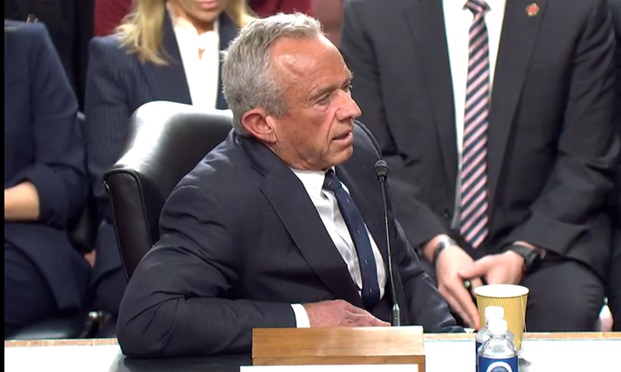Health savings accounts allow individuals to set aside tax-free dollars to pay for qualified medical expenses. As such, it makes sense to most people that they would lose this tax benefit and pay an additional penalty if they use HSA money for an ineligible expense, similar to the tax and penalty they would pay for an early withdrawal from an IRA or 401(k). The penalty increases from 10 percent to 20 percent beginning with the 2011 tax year and is calculated on IRS form 8889, which HSA account holders are required to complete.
Taxpayers do not actually have to send their receipts to the IRS to prove that the money spent out of their HSA was for qualified expenses – unlike an FSA or HRA, substantiation of claims is not required. Instead, the individual keeps records of his or her medical expenses and self-reports to the IRS whether a penalty applies or not. He will need to produce these records if he is ever audited.
There are a few other instances where an HSA account holder might be required to pay a penalty, and they all have to do with contributing more than the allowed amount to the account.
Recommended For You
Individual becomes ineligible prior to Dec. 1
The first situation is when an individual becomes ineligible to contribute to an HSA prior to Dec. 1. This could happen for a variety of reasons: she is no longer covered by a high deductible health plan; she obtains other coverage that would pay prior to the minimum HSA deductible; her spouse signs up for an FSA or HRA that could be used to pay for her medical expenses; or she elects Medicare Part A or B.
In any of these circumstances, she can no longer make HSA contributions and must pro-rate her maximum contribution for the year based on the number of months she was eligible. For example, if she's under age 55 and has single HDHP coverage for the first six months of the year but switches to a traditional co-pay plan on July 1, she would need to multiply her maximum contribution of $3,050 by 50 percent since she was only eligible for six months of the year. Anything she contributes above the $1,525 pro-rated amount would need to be reported as taxable income and she would owe an additional 6 percent excise tax, or penalty, for each year the excess contribution remains in the account.
Individual fails "last-month rule" testing period
If the above situation were reversed – if the individual had a traditional co-pay plan for the first six months of the year but then switched to an HSA-qualified HDHP, she could actually take advantage of the "last-month rule" and contribute the full $3,050 into her account. Under the last-month rule, if you are an eligible individual on the first day of the last month of the tax year (Dec. 1 for most taxpayers), you are considered an eligible individual for the entire year. You are treated as having the same HDHP coverage for the entire year as you had on the first day of the last month.
So in this situation, if the taxpayer is eligible to contribute to an HSA for the last half of the tax year, she would not be limited to the pro-rated amount of $1,525; instead, she could contribute the full $3,050 to her account. This would be true even if her HDHP coverage started Dec. 1 – she could still contribute the full $3,050.
Anytime you take advantage of the last-month rule and contribute more than the pro-rated amount to your account based on the number of months you were actually eligible, you are subject to a "testing period". What this means is that you must remain an eligible individual for the next calendar year – if at any point you lose HSA eligibility, you flunk the test and must pay taxes plus an additional 10 percent penalty for any contributions that would not have been made except for the last-month rule – in other words, anything you contributed above the pro-rated amount. Here's an example from IRS Publication 969:
Chris, age 53, becomes an eligible individual on Dec.1, 2010. He has family HDHP coverage on that date. Under the last-month rule, he contributes $6,150 to his HSA. Chris fails to be an eligible individual in June 2011. Because Chris did not remain an eligible individual during the testing period (Dec. 1, 2010, through Dec. 31, 2011), he must include in his 2011 income the contributions made in 2010 that would not have been made except for the last-month rule. Chris uses the below worksheet to determine this amount.

Chris would include $5,637.50 ($6,150.00 – $512.50) in his gross income on his 2011 tax return. Also, a 10 percent additional tax applies to this amount.
Individual fails IRA distribution testing period
The third situation where an account holder might owe a penalty is when he takes advantage of the option to fund his HSA with money from his IRA. You can only make one qualified HSA funding distribution during your lifetime, and the amount you roll from your IRA to your HSA counts toward your maximum contribution for the year.
When an individual takes advantage of the qualified HSA funding distribution from an IRA to an HSA, this distribution is also subject to a testing period, but in this case the testing period is the next 12 months, not the next calendar year. Should an individual lose HSA eligibility during the testing period, other than because of death or disability, she would owe taxes plus a 10 percent penalty on the amount withdrawn from the IRA to fund the HSA.
Testing Periods: A Summary
Testing periods can be a little confusing, but don't let them scare you. Basically, they apply when you take advantage of the option to make additional contributions to your HSA because you are an eligible individual on Dec. 1 or the option to fund your HSA with money from your IRA. In either of these situations, you need to be sure you're going to maintain HSA eligibility during the testing period (the next calendar year for the last-month rule and the next 12 months for the IRA distribution). If you're not confident that you'll be able to do that, or if you don't want to worry about testing periods and penalties, just make a pro-rated contribution to your account based on the number of months you're actually eligible and you should be fine.
For more information about HSA eligibility, testing periods, and penalties, refer to IRS Publication 969 – it's got a lot of useful information and includes a number of examples that make the rules easy to understand.
Eric Johnson is the Vice President of Sales Development for First Horizon Msaver, one of the nation's leading HSA administrators. He can be reached at 817-366-7536 or [email protected]. You can also find Eric on LinkedIn at www.linkedin.com/in/ericjohnson262.
© Touchpoint Markets, All Rights Reserved. Request academic re-use from www.copyright.com. All other uses, submit a request to [email protected]. For more inforrmation visit Asset & Logo Licensing.






